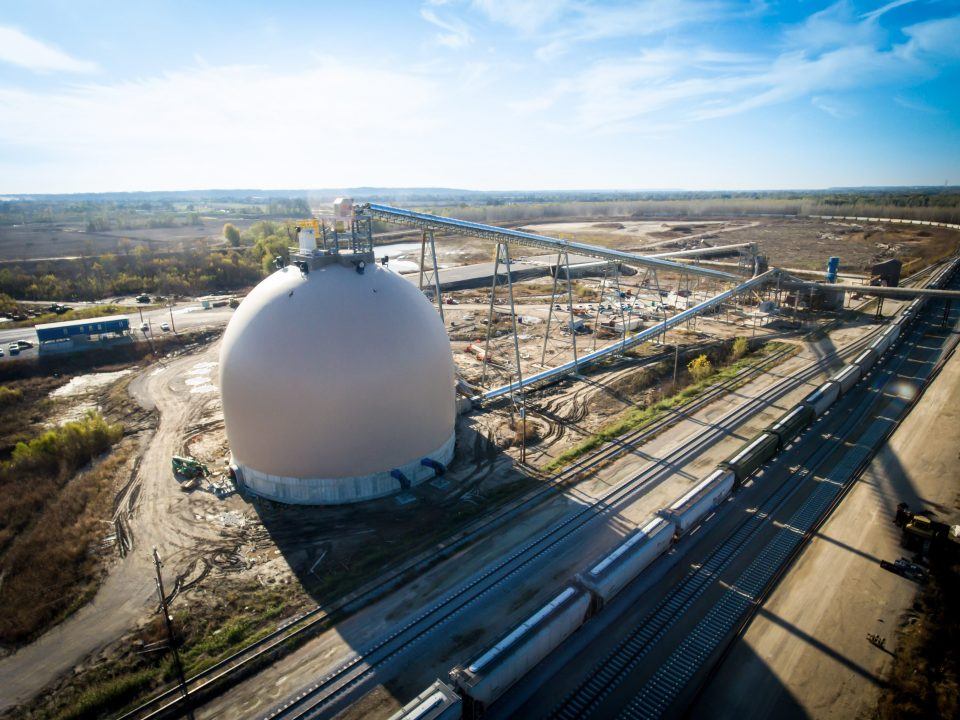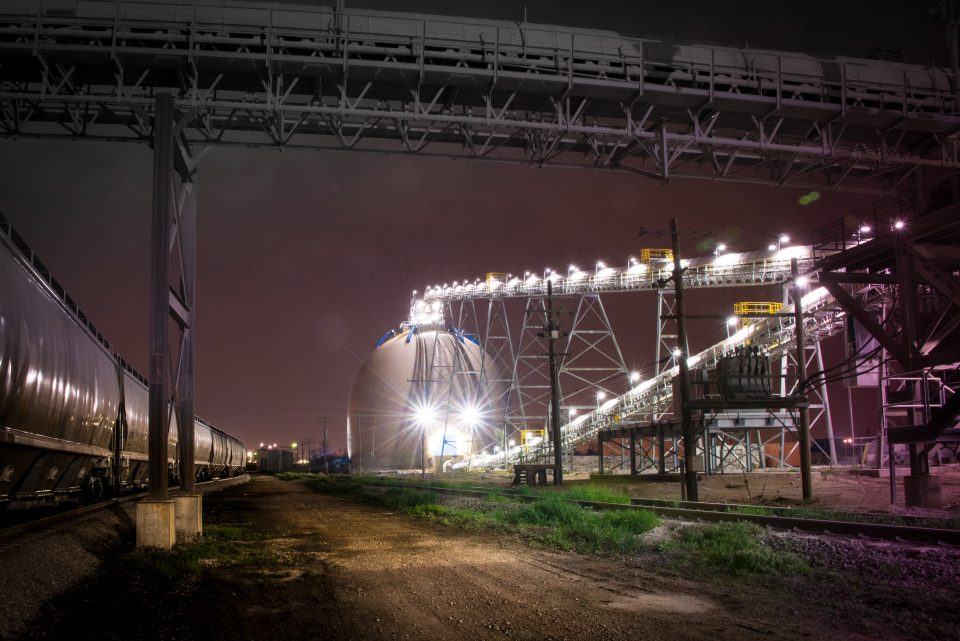As multi-faceted as grain processing is, choosing a sophisticated storage and handling system is key. Monolithic concrete domes from Dome Technology makes grain storage and shipment easier by storing more, accommodating mix and blend, increasing loading and unloading rates, and keeping employees safe.
Dome Technology specializes in turnkey facilities where customers have the advantage of working with a team of in-house engineers who can provide everything the site needs, from product reception to robust storage to barge shipment. Here are some key benefits of dome storage:

Capacity
Processors who select a dome — which can range in capacity from 125,000 to 6.6 million bushels — are able to buy and store large amounts of grain regardless of river levels and wet weather. Processors can continue their work even if river transport isn’t an option for months at a time.
Domes are able to store more than silos with similar dimensions, and increased storage is possible based on the dome’s curvature. Because a dome can support pressure at all points of the structure, product can be stored right up to the apex.
Large-capacity domes with insulation built into the shell protect product integrity, and monitoring systems keep tabs on the finite aspects of quality storage.
Mix and blend
A dome can be engineered with the mix-and-blend ability to pull from any gate—a big deal since making grade keeps barge shipments running smoothly.
The typical grain dome features multiple gates within the foundation; to circulate, product is drawn out of these gates, then conveyed to the top of the dome and reloaded. Terminal managers can also select specific gates to address hot spots, and monitoring systems help identify those. If certain pockets are lower in quality, corresponding gates can be opened to various percentages with gates adjacent to high-quality product opened as well. “The dome’s blending capability will create a consistent product for the customer or end user,” Dome Technology sales manager Heath Harrison said.

Loading and unloading rates
In 2016 Dome Technology completed construction on a grain dome and its handling systems for global commodities merchandizer and agricultural-goods processor Louis Dreyfus Commodities in Cahokia, Illinois. This was the second dome project for Louis Dreyfus; in early 2016 Dome Technology completed an 11,500-metric-ton canola-pellet dome for the company in Yorkton, Saskatchewan, Canada.
The Cahokia dome functions as a daybin with employees filling it during the day and load barges out of the dome during the night. Dome Technology project manager Darryl Cunningham noted that this model makes it possible to run as many as 1,000 trucks per day through the site. The model also allows Louis Dreyfus to run multiple products through the site at the same time through their split receiving systems.
Frequent loading and unloading like this stresses steel tanks, but the dome’s geometry is more tolerant and a better long-term plan for companies wanting to increase throughput. For one upcoming project, a potential client requested that 2,000 tons move per hour — “that would be difficult for some structures to do,” Harrison said.
Ability to move product efficiently and safely
No-entry systems are important for employee safety. According to Carol Jones, an Oklahoma State University professor and expert on grain condition and safety who presented at this year’s GEAPS exchange, about 30 people die per year in the United States in grain entrapment.
Companies eager to secure “no-entry” options can explore different reclaim systems that make this possible; Dome Technology’s engineers identify reclaim that delivers necessary throughput and keeps workers safe. Domes can be designed to hold two to three million bushels and still be a no-entry system, helping with safety and labor efficiency.
These features keep business competitive for processors, shuttle loaders and exporters, and a dome is cost competitive with silos when providing the ability to pull from multiple gates. The inherent strength of monolithic concrete construction boasts the most storage and throughput capabilities for those in the grain industry.
This article was published in the September issue of Dry Cargo International. Read it online here with free site registration.
By Rebecca Long Pyper for Dome Technology